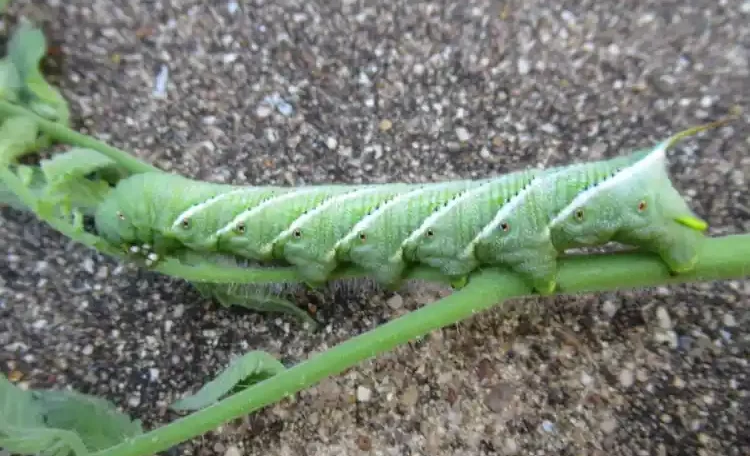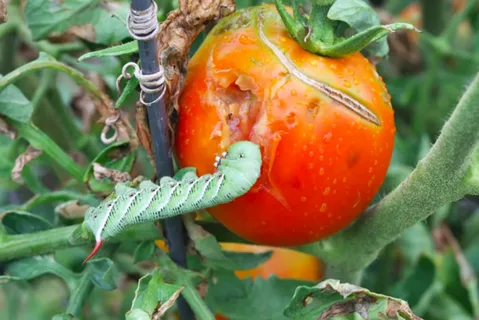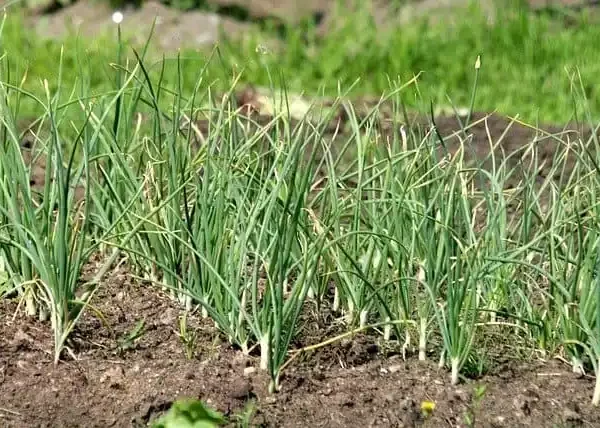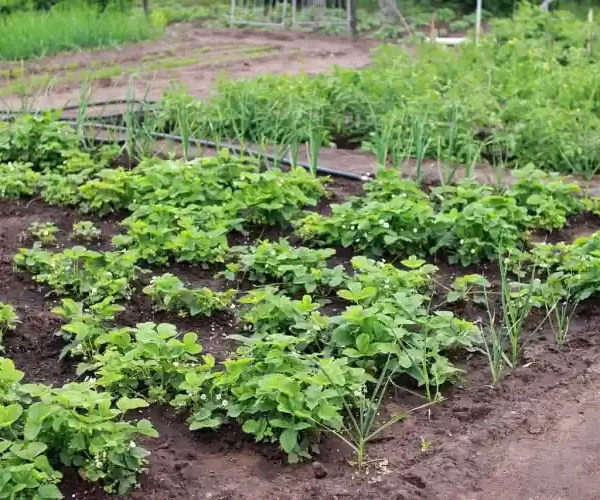Tomato hornworms (Manduca quinquemaculata) are voracious pests that can wreak havoc on tomato plants if left unchecked. In this expert guide, we’ll explore how to identify these destructive caterpillars and effective methods for controlling their populations, drawing on insights from governmental and horticultural bodies, as well as academic experts.
Understanding Tomato Hornworms: Identification and Lifecycle
Tomato hornworms are large green caterpillars with distinctive markings, including white diagonal stripes and a horn-like protrusion at the rear. They can reach lengths of up to four inches, making them easy to spot on tomato plants.
These pests undergo a complete metamorphosis, transitioning from egg to larva (caterpillar) to pupa (cocoon) to adult moth. The adult form, known as the five-spotted hawkmoth, is large and brown with five orange spots on each side of its abdomen.

Signs of Tomato Hornworm Infestation
Signs of tomato hornworm infestation include defoliated foliage, chewed leaves, and the presence of caterpillar droppings (frass) on the plant. Additionally, the caterpillars themselves may be visible on the underside of leaves or crawling along stems.
Natural Predators and Biological Control
Natural predators such as parasitic wasps and predatory insects like lacewings and ladybugs play a crucial role in controlling tomato hornworm populations. These beneficial insects can help keep pest numbers in check without the need for chemical intervention.
Encouraging biodiversity in the garden by planting a variety of flowering plants can attract natural enemies of tomato hornworms, creating a more balanced ecosystem that promotes pest control.
Mechanical Control Methods
Handpicking is an effective method for removing tomato hornworms from infested plants. Simply inspect the foliage regularly and manually remove any caterpillars you find, dropping them into a bucket of soapy water to prevent them from returning to the plant.
Pruning infested foliage can also help reduce hornworm populations, as it removes potential feeding sites and eliminates hiding places for the pests.
Cultural Control Practices
Practicing good garden hygiene is essential for preventing tomato hornworm infestations. Rotate crops annually to disrupt the pests’ lifecycle and avoid planting tomatoes in the same location year after year.
Mulching around tomato plants can help deter hornworms by creating a barrier that makes it difficult for them to access the soil and pupate.
Chemical Control Options
While chemical pesticides can be effective against tomato hornworms, they should be used as a last resort and with caution to minimize harm to beneficial insects and the environment.
When using chemical insecticides, always follow label instructions carefully and apply them during the early morning or late afternoon when pollinators are less active.
Monitoring and Prevention Strategies
Regular monitoring is key to detecting tomato hornworm infestations early and preventing them from causing significant damage to tomato plants. Inspect foliage, especially the undersides of leaves, for signs of caterpillar activity, and take prompt action to control populations as needed.
Implementing preventative measures such as crop rotation, companion planting, and habitat enhancement for natural enemies can help reduce the risk of future hornworm infestations and promote long-term pest management in the garden.
Conclusion
By familiarizing yourself with the identification and control methods outlined in this expert guide, you can effectively manage tomato hornworm populations and protect your tomato plants from damage. Whether employing natural predators, mechanical control techniques, or cultural practices, a proactive approach to pest management is essential for maintaining healthy and productive gardens.
What do tomato hornworms look like?
Tomato hornworms are large, green caterpillars with distinctive white diagonal stripes along their sides and a horn-like protrusion at the rear.
How do tomato hornworms damage tomato plants?
Tomato hornworms feed voraciously on tomato plant foliage, defoliating the plant and reducing its ability to photosynthesize, which can stunt growth and reduce fruit production.
What are the signs of a tomato hornworm infestation?
Signs of a tomato hornworm infestation include chewed leaves, defoliated foliage, and the presence of caterpillar droppings (frass) on the plant.
What time of year are tomato hornworms most active?
Tomato hornworms are most active during the warm summer months when tomato plants are actively growing and producing foliage.
How can I manually remove tomato hornworms from my plants?
Handpicking is an effective method for removing tomato hornworms from infested plants. Simply inspect the foliage regularly and pick off any caterpillars you find, dropping them into a bucket of soapy water to prevent them from returning.
What are some natural predators of tomato hornworms?
Natural predators of tomato hornworms include parasitic wasps, predatory insects like lacewings and ladybugs, and birds such as sparrows and robins.
What cultural practices can help prevent tomato hornworm infestations?
Cultural practices such as crop rotation, companion planting with repellent herbs like basil and marigold, and mulching around tomato plants can help deter tomato hornworms and reduce the risk of infestation.
Are there any chemical insecticides effective against tomato hornworms?
Yes, chemical insecticides can be effective against tomato hornworms, but they should be used as a last resort and with caution to minimize harm to beneficial insects and the environment.
How can I monitor my tomato plants for signs of tomato hornworm infestation?
Regularly inspect tomato plant foliage, especially the undersides of leaves, for signs of caterpillar activity, such as chewed leaves and frass. This proactive approach can help detect infestations early and prevent widespread damage.
What should I do if I suspect a tomato hornworm infestation in my garden?
If you suspect a tomato hornworm infestation in your garden, take immediate action to control the population using methods such as handpicking, cultural practices, or, if necessary, chemical insecticides. Prompt intervention can help minimize damage to your tomato plants and preserve your harvest.
- Tennessee’s THC Beverage Market - June 5, 2025
- Top THC Infused Seltzers in Delaware - June 5, 2025
- Florida’s Hottest THC Infused Beverages - May 28, 2025




